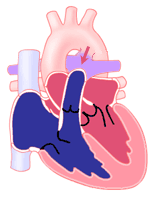

N-Terminal Pro–B-Type Natriuretic Peptide Noncardiac diseases, including gastric dilation volvulus and sepsis (eg, pyometra).Myocarditis caused by infectious or parasitic agents, such as Chagas’ disease.Isolated insult or continuous myocardial damage, depending on whether values decrease or remain persistently elevated.Some cardiac troponin I release from myocardial cells occurs with age, often resulting in measurable concentrations. Elevations denote myocardial injury but do not indicate the specific cause of the damage, similar to alanine aminotransferase as a blood-based indicator of hepatic cellular damage. gilab/service/assays/cardiac-troponin) have a lower detection limit than standard assays, which allows the former to detect lower circulating levels of cardiac troponin I. High-sensitivity cardiac troponin I assays (ADVIA Centaur TnI-Ultra Assay, validated and available at vetmed. The serum level of cardiac troponin I, a protein involved in cardiac muscle contraction, is a sensitive and specific marker of myocardial damage. Numerous studies in dogs and cats have been performed over the past decade to determine which cardiac biomarkers are most useful, and how best to interpret measurement results. Potentially determine treatment approachĬardiac biomarker measurement is not a stand-alone test, but rather part of a diagnostic evaluation that includes thoracic radiographs, electrocardiography, and echocardiography these collective diagnostics determine the clinical picture for each patient.The ability to rapidly share digital images allows practitioners and specialists to work together seamlessly, enhancing patient care.Ī biomarker is a measure of a biological or pathologic process that can be used to:

#HEART PRO APP DUCTUS ARTERIOSUS SOFTWARE#
Post processing software that allows the clinician to zoom in on specific structures of interest or take measurements ( Figure 1).Rapid acquisition of images and ability to make contrast adjustments that improve image quality without having to change settings and retake images, as required when using standard film.The benefits of current digital technology include: Identifying noncardiac causes of cough (eg, mainstem bronchial compression, tracheal collapse, inflammatory airway disease).Diagnosing and monitoring cardiac disease and congestive heart failure (CHF).Improvements in technology and image quality produce radiographic images that are undoubtedly helpful in: These developments encompass:ĭigital radiography is now used in many veterinary practices, and thoracic radiographs are an integral part of a cardiac evaluation. This article highlights 5 developments in veterinary cardiology that have made a difference in the diagnosis and management of dogs and cats with heart disease. Veterinary practitioners strive to provide patients and owners with state-of-the-art preventive, diagnostic, and therapeutic care.


 0 kommentar(er)
0 kommentar(er)
